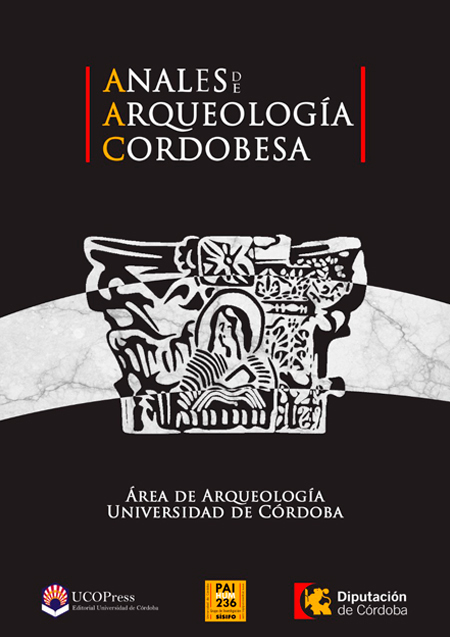A story under construction: Cartagena's defences in Antiquity. Recent newsnovelties about the Roman Republican city wall
DOI:
https://doi.org/10.21071/aac.v0i0.6432Keywords:
Carthago Nova, Republican Roman city of Cartagena, casamate wall, 2th century BC.Abstract
The archaeological excavations carried out on the summit of cerro del Molinete, Cartagena (Carthago Nova, Hispania Citerior), between 2010 and 2011, have partially uncovered a lengthy structure formed by two parallel, longitudinal walls; these are linked by a number of transversal walls, which form several internal spaces between them. From an architectural point of view, this ‘casemate wall’ is typologically related to a Phoenician tradition well known in the Greek-Hellenistic world and present in the Iberian Peninsula from the 8th century BC. The pottery associated with the structure suggests a date in the first half of or in the mid-2nd century BC. This new structure must therefore be the wall built to defend city and acropolis from the north during the earliest urban and architectonic monumentalisation process to be carried out in the city.Downloads
Download data is not yet available.
Downloads
Published
2013-12-01
How to Cite
NOGUERA CELDRÁN, J. M., MADRID BALANZA, M. J., & MARTÍNEZ LÓPEZ, J. A. (2013). A story under construction: Cartagena’s defences in Antiquity. Recent newsnovelties about the Roman Republican city wall. Anales De Arquelogía Cordobesa, 35–74. https://doi.org/10.21071/aac.v0i0.6432
Issue
Section
ARTICLES
License
Aquellos autores/as que tengan publicaciones con esta revista, aceptan los términos siguientes:- Los autores/as conservarán sus derechos de autor y garantizarán a la revista el derecho de primera publicación de su obra, el cuál estará simultáneamente sujeto a la Licencia de reconocimiento de Creative Commons que permite a terceros compartir la obra siempre que se indique su autor y su primera publicación esta revista.
- Los autores/as podrán adoptar otros acuerdos de licencia no exclusiva de distribución de la versión de la obra publicada (p. ej.: depositarla en un archivo telemático institucional o publicarla en un volumen monográfico) siempre que se indique la publicación inicial en esta revista.
- Se permite y recomienda a los autores/as difundir su obra a través de Internet (p. ej.: en archivos telemáticos institucionales o en su página web) antes y durante el proceso de envío, lo cual puede producir intercambios interesantes y aumentar las citas de la obra publicada. (Véase El efecto del acceso abierto).


